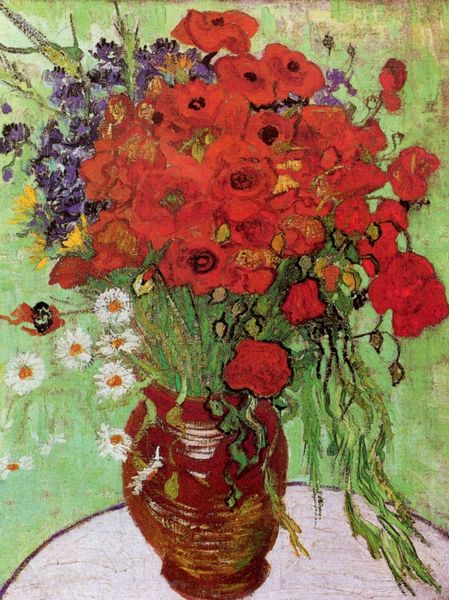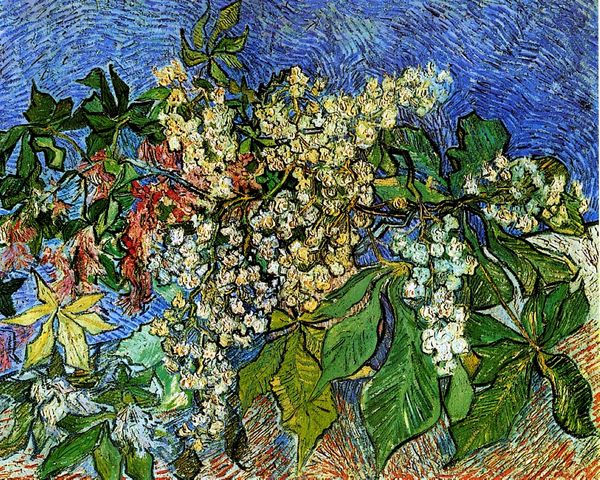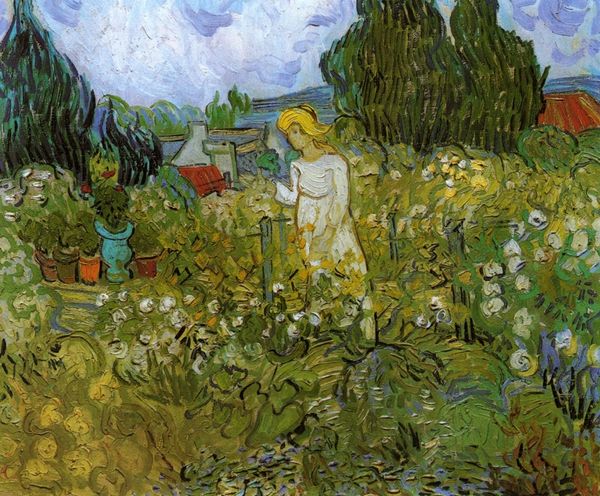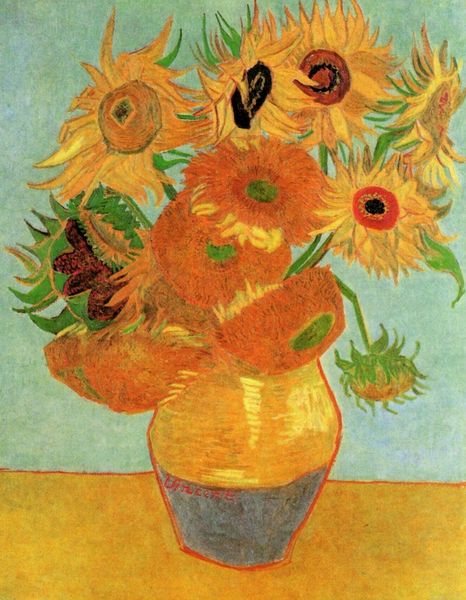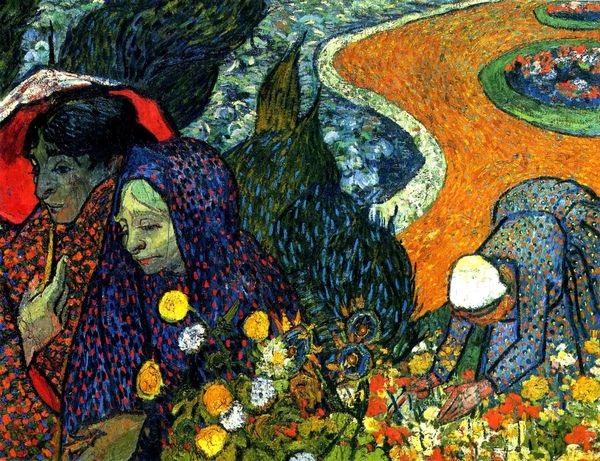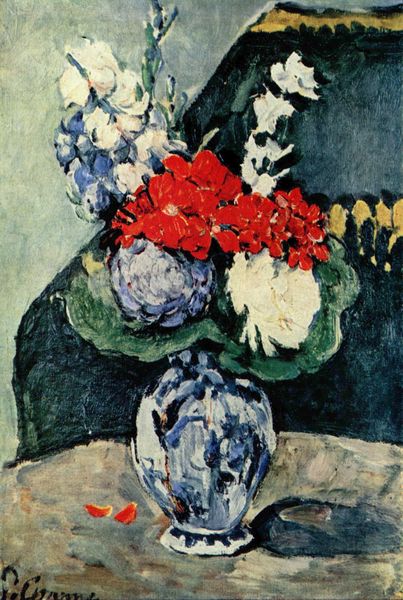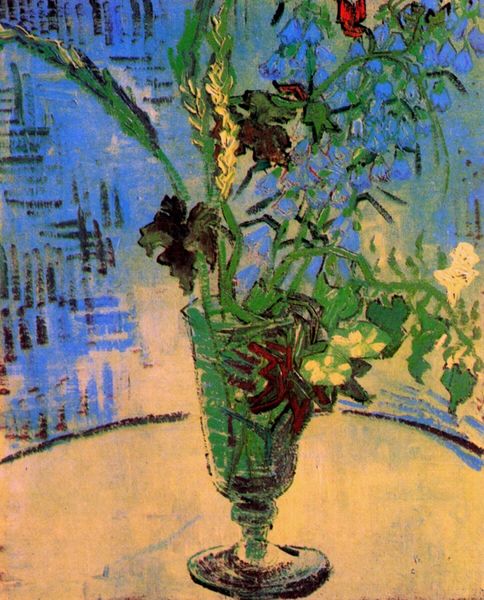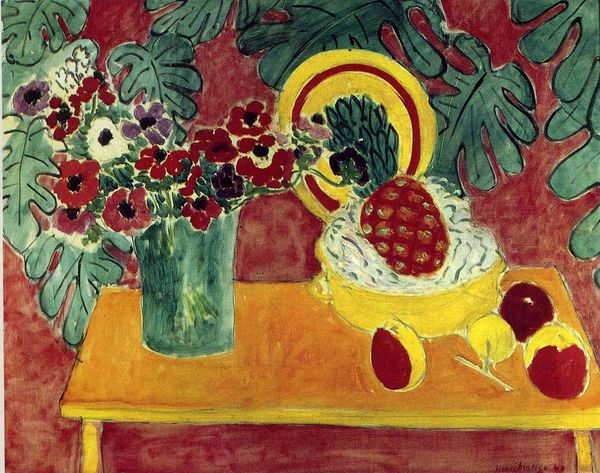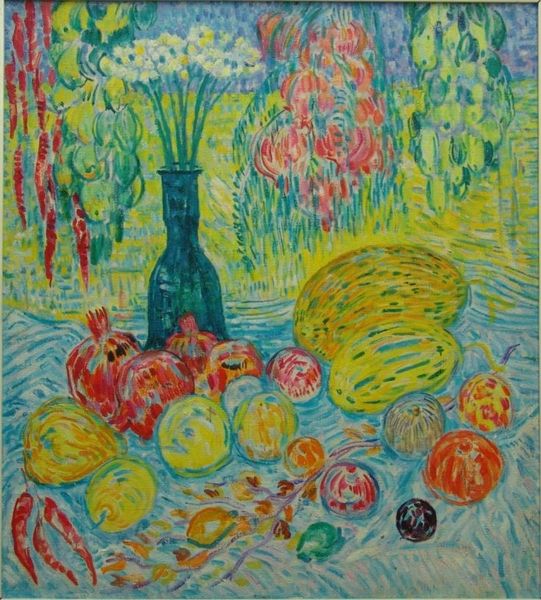
painting, oil-paint, impasto
#
organic
#
mother nature
#
painting
#
oil-paint
#
flower
#
impressionist landscape
#
impasto
#
post-impressionism
Dimensions: 67 x 47 cm
Copyright: Public domain
Editor: So, here we have Van Gogh’s "Wild Flowers and Thistles in a Vase," painted in 1890. It’s oil on canvas, and what strikes me is the thick, almost sculptural quality of the paint. How do you approach a work like this, focusing on materiality? Curator: Well, consider Van Gogh’s process. The visible brushstrokes aren’t just descriptive; they’re performative. He's applying the paint in such a way that the materiality itself becomes a key part of the expression. This impasto technique wasn't just about representing the flowers; it was about making the painting a physical object, thick with labor. What do you think drove him to use such a distinctive method? Editor: Perhaps he wanted to convey the raw energy of nature, mimicking its chaotic abundance through the sheer volume of paint? Curator: Exactly! And that speaks to a larger point about consumption. In the late 19th century, there was growing urban-rural tension due to industrialisation. Art such as Van Gogh’s, highlighting uncultivated flora, might respond to societal yearning for the untouched wilderness, providing a marketable image. The paint itself, a mass-produced product of industrial chemistry, facilitates this engagement. How does knowing the painting's material origin change how you see the 'naturalness' of the painting? Editor: It’s interesting, the painting then becomes a dialogue between the natural world and industrial processes through the handling of oil paint. It's nature, filtered and mediated through human labor and commodity culture. I'll be thinking about this for a while! Curator: Yes, by paying attention to the process and the material realities behind "Wild Flowers and Thistles," we gain insight into how the work speaks not just about the external world but the social forces at play, always in transformation.
Comments
No comments
Be the first to comment and join the conversation on the ultimate creative platform.
